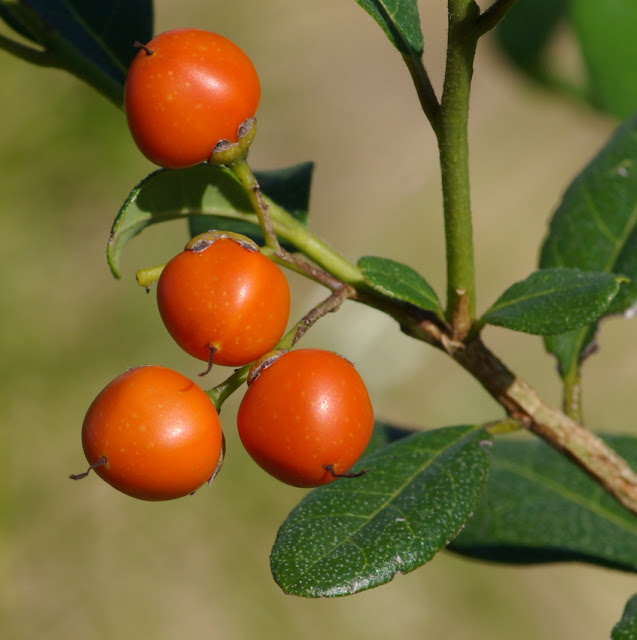Rough strongbark is a Florida state-listed endangered plant with significant wildlife value. It is a large shrub or small tree with small, dark green leaves whose upper surface has coarse, rough hairs that give the leaves a sandpaper-like texture. Attractive and sweetly fragrant white flowers are borne nearly year around and these are much sought after by various insects, including bees and butterflies. The flowers are followed by rather large, highly ornamental, orange berries that are eaten by birds, raccoons, opposums, and other animals.
Rough strongbark occurs as a native plant in Florida only in the Florida Keys but it can be grown at least as far north as Palm Beach County and probably much further north if it is not grown too far from the moderating influence of the Atlantic Ocean or the Gulf of Mexico. Its cultivation presents few problems so long as it is provided with well-drained rocky or sandy soil and abundant sunlight. Once established, rough strongbark is extremely drought tolerant and even small plants have readily established themselves in the driest part of my garden. Propagation from cuttings and seeds is difficult; however, with time, numerous self-sown seedlings will appear under mature plants and these can be potted up when they are a few inches high. Since rough strongbark readily sprouts from the roots wherever the roots are cut or injured, it can probably also be propagated from root cuttings.
Rough strongbark is extremely tolerant of hot, dry conditions and poor, alkaline soils. Thus, it is useful as a landscape plant or hedge in difficult urban situations such as roadsides and parking lots. The abundant fruits falling on sidewalks can make quite a mess and it is not recommended as a residential street tree, although it is otherwise an excellent street tree.
Image and text © 2013 Rufino Osorio

No comments:
Post a Comment